Set Theory
A set is a group of objects. Each object is known as a member of the set. A set can be represented using curly brackets. So a set containing the numbers 2, 4, 6, 8, 10, ... is: {2, 4, 6, 8, 10, ... } . Sets are often also represented by letters, so this set might be E = {2, 4, 6, 8, 10, ...} . Alternatively, E = {even numbers} .
Common Sets
Some sets are commonly used and so have special notation:
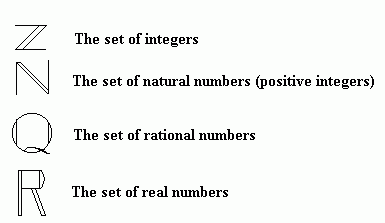
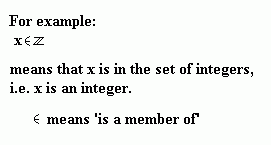
Other Notation
Subsets
If A is a subset of B, then all of the elements of A are also in B. For example, if A = {1, 2, 3} and B = {1, 2, 3, 4, 5} then A Í B (Í means is a subset of).
Number of Members
If A = {1, 2, 4, 8}, then n(A) = 4. This is because n(A) means the number of members in set A.
The Universal Set
The universal set is the set of all sets. All sets are therefore subsets of the universal set.
Venn Diagrams
Venn diagrams are used to represent sets. Here, the set A{1, 2, 4, 8} is shown using a circle. In Venn diagrams, sets are usually represented using circles. The universal set is the rectangle. The set A is a subset of the universal set and so it is within the rectangle.
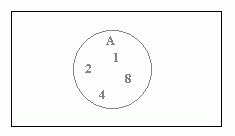
The complement of A, written A', contains all events in the sample space which are not members of A. A and A' together cover every possible eventuality.
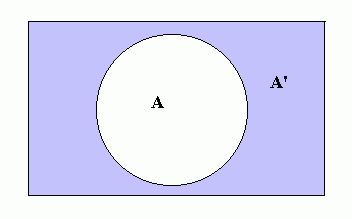
A ÈB means the union of sets A and B and contains all of the elements of both A and B. This can be represented on a Venn Diagram as follows:
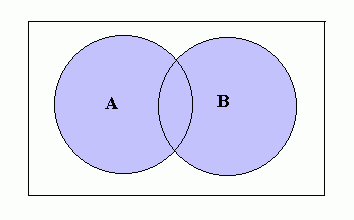
AÇB means the intersection of sets A and B. This contains all of the elements which are in both A and B. AÇB is shown on the Venn Diagram below:
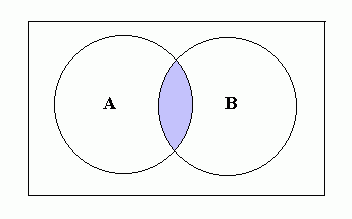
An important result connecting the number of members in sets and their unions and intersections is:
- n(A) + n(B) - n(AÇB) = n(AÈB)
